Today, we review the IO Audio Volare Tribrid IEM. It is selling for $599 USD.
Disclaimer: Shenzhen Audio provided the Volare. As always, this review reflects my unbiased perspective.
IO Audio & Volare
I/O Audio is a new player in the earphone market, debuting with the Volare IEMs. Launching with a tribrid model is a bold move, but the team behind this product seems to have substantial experience. The Volare is equipped with one custom dynamic driver, four custom balanced armatures, and two dual EST drivers. IO’s engineers emphasize that most of the tuning was done acoustically and with careful selection of custom drivers, relying less on the electrical crossover, which is a significantly more challenging approach.
The Volare’s shell is manufactured and finished by HeyGears, a 3D printing provider we have seen collaborating with some of the most well-known brands such as Moondrop, FiiO, Softears, etc. They specialize in 3D printing with micron-level accuracy. This collaboration is excellent as hand-poured resin shells tend to be larger than those designed digitally with precise clearances. The Volare houses a full crossover PCB, acoustic cavity/waveguide, and nine drivers within its medical resin shell.
The Volare is available for $599 USD on ShenzhenAudio with warranty and other support services backed by Shenzhen Audio themselves.
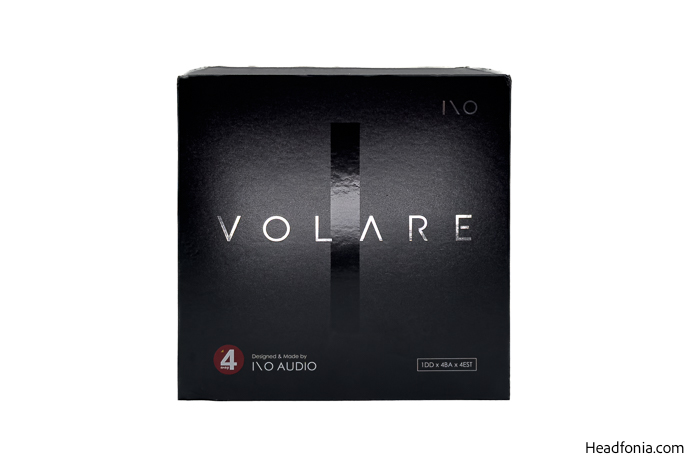
Specs & Highlights
1x 8mm Custom DD + 4x Custom Full Range BA + 4x Sonion EST
4-Way Electronic Crossover PCB with HQ Components
3-Way Physical Sound Tube Design for Each Major Frequency Region
121 dB/Vrms Sensitivity @1kHz
4.8 ohm ±%10 Impedance @1kHz
Resin Printed Shells with Wax Trap Nozzles
Silver-Plated OFC Copper Cable with 8-Braid Structure
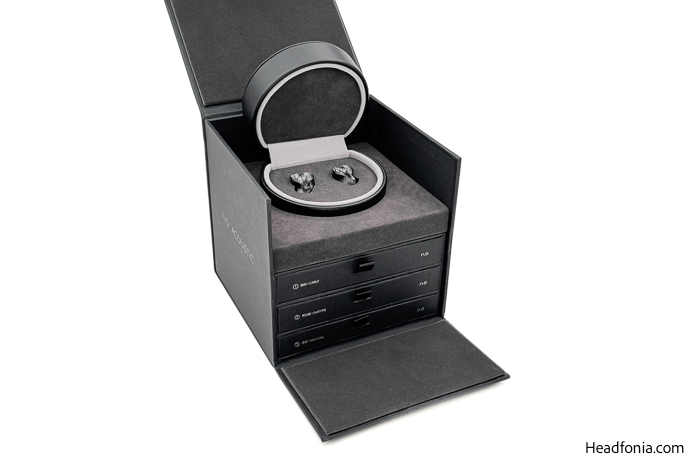
Packaging and Accessories
The Volare comes in a relatively large, square box for an IEM. The box is covered by a cardboard sleeve with the Volare model name and the I/O Acoustic brand name in chrome lettering. On the back of the sleeve is a list of box contents, the Volare’s specifications, and a frequency response graph. Removing the sleeve reveals an impressively designed box. You may ask, “What could be impressive about a cardboard box?” Let me explain.
The Volare box opens by lifting two flaps that fold forward. The first thing you see is Volare’s black leather carrying case. It’s worth noting that the compartment containing the carrying case and the insides of the flaps are completely lined with velvet.
The bottom flap hides three drawer compartments. These compartments open like drawers and contain various accessories. The first drawer is reserved for the Volare cable. The cable and its modular tips are secured in foam. Moving to the drawer below, you are greeted with an incredible assortment of ear tips. Here, encased in foam, are five different sets of ear tips, each consisting of three pairs. Each set has a different nozzle diameter and varies in the thickness of the part that touches your ear, providing a different sound performance. I was quite impressed with the quality of the tips, and my favorites are the TW45 and ST50. The ST50, in particular, has a structure similar to Spinfit and rotates in the ear canal in a similar way. Volare comes with a total of four silicone sets and one foam set of ear tips. I must mention that I was also pleased with the quality of the foam ear tips, which closes the topic of ear tips until we get to the sound section.
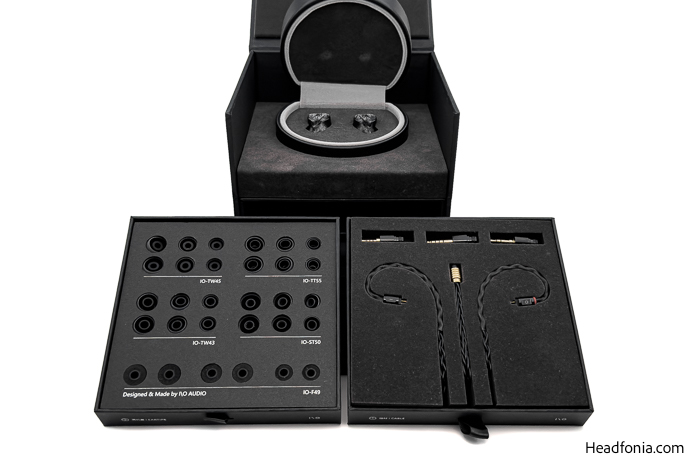
Opening the bottom drawer, we find a gold-plated adapter that converts a 3.5mm stereo plug to a 6.35mm jack and a small box. Inside the box is a user’s manual, a QC card, a small cleaning cloth, and a stylish warranty card with serial. I quickly skimmed the cable because I believe Volare’s cable deserves its own paragraph. First, the cable is an eight-strand construction of silver-plated oxygen-free copper wires covered in a matte black jacket. Braided in a twist style, the cable is very pliable and comfortable to use despite having an 8-braid config. The Y-splitter and slider parts are light and compact, without any excess weight, which dramatically impacts the ease of use/comfort.
The I/O brand name can be found on the Y-splitter, and the 2-pin connectors are labeled I/O, with I for the left side and O for the right side. The earhook/earguide part is formed with a matte shrink and does not cause any itching or discomfort when it touches the skin. Regarding the modular system, the connector size is ideal and not bulky, unlike many others on the market. It has a screw lock mechanism and offers three types of plugs: 3.5mm, 2.5mm and 4.4mm. I appreciate the color matching of the cable with the Volare and believe this pairing was well thought out. I’m not too fond of it when manufacturers pair chrome accented cables with black or dark shell IEMs, as it creates a poor visual impression. You can’t beat black; it’s timeless.

I believe Volare offers the best unboxing and accessory experience I have seen in the last three years within the IEM market. Both the quality of the accessories and the aesthetic, ergonomic, and overall quality of the cable make for a truly great experience. It’s a new benchmark for the sub-kilobuck division.
Design, Build Quality & Fit
Volare looks stunning thanks to its resin shell and elegant design. The inner shell is infused with aluminum flake powder, giving it a shiny, light grey color. Its faceplate features a design that reminds me of the Japanese forest grass “Hakonechloa Macra.” When exposed to direct sunlight, the textures inside the shell shine beautifully, revealing an impressive depth between the lacquer and the shell.
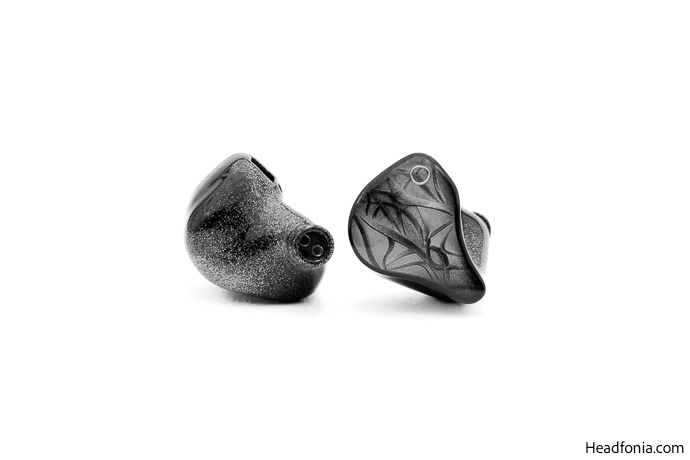
In terms of size, I would label Volare’s chassis somewhere between medium and large, but its ergonomic design provides a comfortable fit. Compared to the Monarch and Hype series, the Volare feels more comfortable in my ears, likely due to its more rounded inner side with less rook/conch protrusion. I found the fit to be perfect, allowing me to wear them for over eight hours without any discomfort.
The Volare is also very comfortable in terms of ear pressure. The air pressure balance system developed by IO engineers seems to be working well, as I didn’t experience any pressure build-up. It is only mentioned in the manual and nowhere else, so blame the marketing department, but it works despite having only one ventilation port located just below the 2-pin connector. It also could be doing double duty, providing air for the DD inside. Volare’s fit is quite deep with the right ear tips, thus providing around 20 dB of passive isolation.
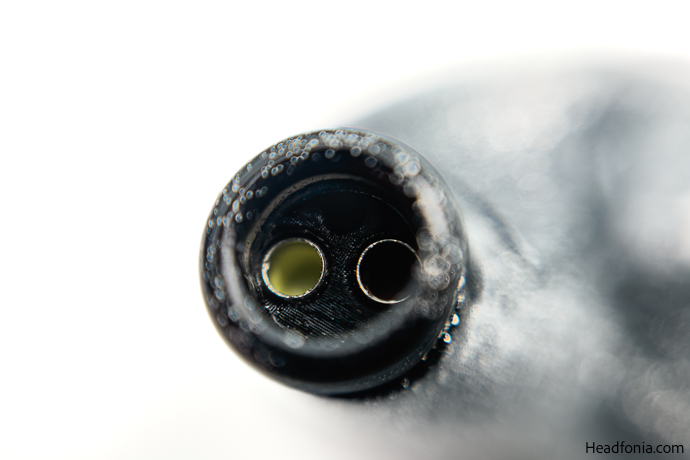
The sound tubes are positioned slightly inside the nozzle, functioning as an effective wax trap. I appreciate this design choice, which I’ve seen used by other high-end manufacturers like Vision Ears. Overall, the build quality of the Volare is great, combining aesthetic design with ergonomic design for a comfortable and pleasant experience.
The review continues on the next page. Click here or use the jump below.
Page 1: IO Audio, Volare, Packaging & Accessories, Design, Build Quality & Fit
Page 2: Sound Impressions, Low, Mid, High, Technical Capability, Comparison, Last Words






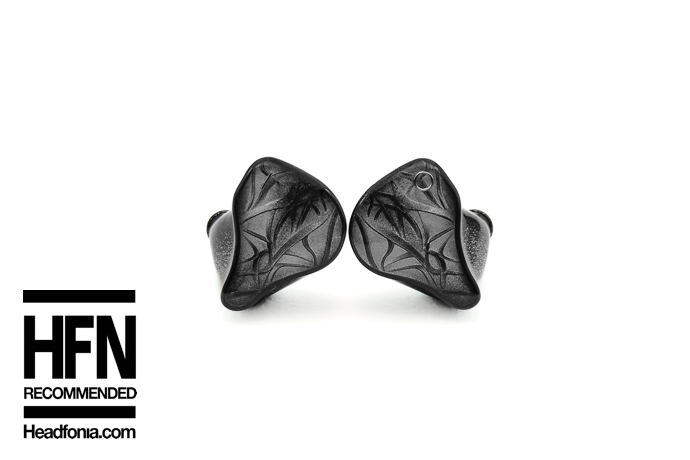
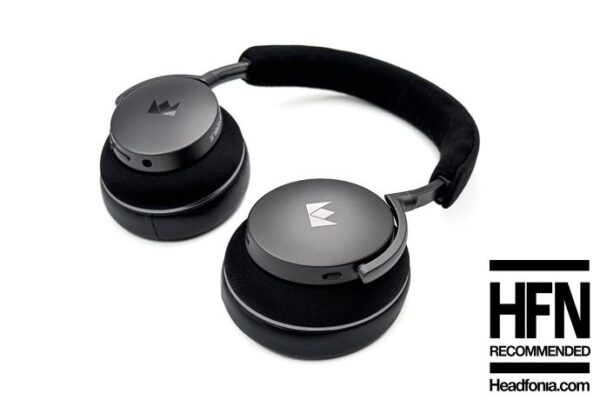

Don
Hi,
Did you notice any issue with the low 4.8 ohm impedance of the iem with the 1.1 ohm balanced output of the DX180? Did it sound proper?
Thank you.
Stephen
I’ve been using the Onix Alpha with my Volares on both the SE 3.5mm at 0.4ohm output impedance and the balanced 4.4mm at 0.8ohm and it performs beautifully on both. The soundstage and separation are very tasty with this combo, and I’m currently trying to see if utilizing a separate power bank via the iBasso C19 splitter cable helps.